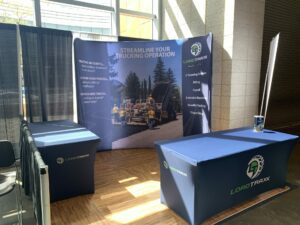The truck transportation industry has been the backbone of global commerce for decades, ensuring goods reach their destinations in a timely and efficient manner. However, the future of this industry is on the cusp of a remarkable transformation – automation. As technology advances by leaps and bounds, automation is set to revolutionize the truck transportation sector, ushering in a new era of efficiency, safety, and sustainability.
- The Rise of Autonomous Trucks:
Autonomous trucks, equipped with an array of sensors, cameras, and advanced AI systems, are poised to reshape the landscape of truck transportation. These self-driving vehicles have the potential to greatly enhance safety on the roads by eliminating the human error factor. They can maintain optimal speeds, keep safe distances from other vehicles, and react instantaneously to changing traffic conditions.
- Improved Efficiency and Cost Savings:
Automation brings with it unparalleled efficiency gains. Autonomous trucks can operate 24/7 without the need for mandated rest breaks, significantly reducing delivery times. The predictive maintenance capabilities of these vehicles can prevent breakdowns and reduce downtime, further boosting efficiency. In addition, fuel efficiency can be optimized through real-time data analysis, leading to substantial cost savings for trucking companies.
- Workforce Evolution:
The adoption of automation in the trucking industry will inevitably lead to discussions about workforce implications. While some fear job displacement, others argue that automation will transform rather than eliminate jobs. Instead of traditional truck drivers, the industry will require skilled technicians to manage and oversee the autonomous systems, perform maintenance, and handle complex logistical tasks that AI cannot replicate.
- Overcoming Challenges:
Despite the promise of automation, there are challenges to overcome. Technical hurdles, such as perfecting AI algorithms to handle complex and dynamic driving scenarios, are still being addressed. Additionally, regulatory frameworks and public acceptance play crucial roles. Establishing standards for autonomous vehicle safety and addressing concerns about liability in case of accidents are important steps in the journey towards automation.
- Environmental Impact:
The trucking industry’s carbon footprint is substantial, and automation could play a pivotal role in reducing it. Autonomous trucks can be programmed to drive in the most fuel-efficient manner, optimizing routes and minimizing idle times. Furthermore, platooning – where several trucks drive closely together in a convoy, taking advantage of reduced air resistance – could become a common practice, further reducing emissions.
- Data-Driven Insights:
With automation comes an influx of data. Autonomous trucks generate copious amounts of information related to driving patterns, road conditions, and vehicle performance. This data can be harnessed to make informed decisions about route planning, maintenance schedules, and operational optimizations. Machine learning algorithms can crunch this data to provide valuable insights that enhance efficiency.
- Urban Logistics and Last-Mile Delivery:
Automation isn’t limited to long-haul transportation. Last-mile delivery in urban environments stands to benefit as well. Autonomous delivery trucks and drones can navigate through congested city streets, ensuring timely and contactless deliveries. This could reshape the e-commerce landscape, providing faster and more reliable delivery options to consumers.
In conclusion, the automation of the truck transportation industry is not a distant dream; it’s a reality that’s unfolding before our eyes. While challenges persist, the potential benefits – enhanced safety, efficiency, reduced emissions, and improved logistics – are too significant to ignore. As technology continues to evolve and regulatory frameworks adapt, we’re on the verge of a new era where the road ahead is navigated by machines that promise to transform the way we move goods across the globe.
Featured Blogs






